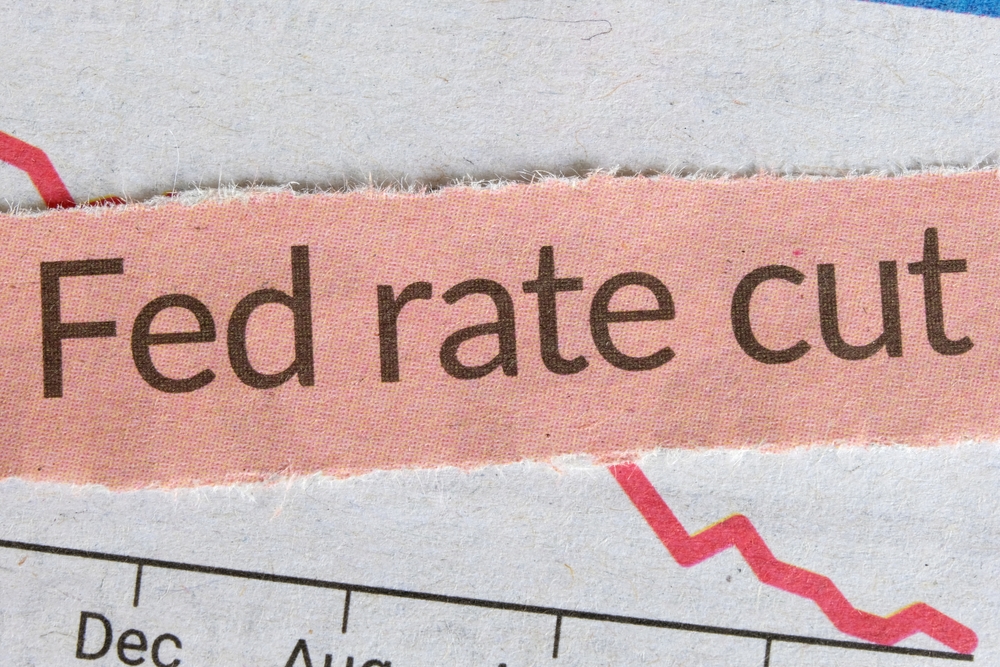
October 300 Comments
Fed Rate Cuts: What’s Happening in the U.S. Economy
Recently, the Federal Reserve lowered its main interest rate by 0.25%, bringing it into the 3.75%–4.00% range.

Fed Rate Cuts: What’s Happening in the U.S. Economy
What’s Going On?
Recently, the Federal Reserve lowered its main interest rate by 0.25%, bringing it into the 3.75%–4.00% range. This was the second rate cut this year, made to support a slowing U.S. economy and deal with uncertainty around inflation and job growth.
The decision came after data showed that hiring had slowed down, inflation was still above the Fed’s target, and the government shutdown had delayed some key economic reports. These signs pointed to a weaker economy, which pushed the Fed to act sooner rather than later.
Why the Federal Reserve is Cutting Rates
The Federal Reserve has two main goals:
- Keep inflation low so people can afford everyday goods and services.
- Support jobs and growth by encouraging businesses to hire and invest.
When the economy cools down, the Fed often cuts interest rates to make borrowing cheaper. Lower rates mean people can take out loans for homes, cars, or businesses at better prices. This encourages spending, which helps the economy recover.
However, inflation is still higher than the 2% target. That’s why the Fed isn’t rushing into deeper or faster cuts. It’s trying to balance between supporting growth and keeping prices under control.
What the Decision Means for Ordinary People
When the Fed lowers interest rates, the effects spread across almost every part of life:
- Loans and Credit Cards: Interest costs can go down, making it easier to pay off debt.
- Mortgages: Homebuyers might see slightly lower mortgage rates, although the change isn’t instant.
- Savings Accounts: The return on savings can drop a bit, as banks adjust rates accordingly.
- Investments: Stock markets often rise when borrowing becomes cheaper and investors expect growth.
But this doesn’t mean everyone benefits equally. People with fixed-rate loans won’t see a change, and some banks might take time to pass the benefits on to customers.
What’s Next for the Fed
Even though the central bank made another reduction, it clearly stated that future decisions will depend on new data. If inflation continues to ease and the job market weakens further, we might see more fed rate cuts in the coming months.
But if inflation rises again, the Fed could pause or even raise rates. So, nothing is guaranteed. The current situation is all about balance — cutting too fast could increase inflation, while waiting too long could hurt job growth.
Impact on Global Markets
Changes in the Federal Reserve’s policy don’t just affect Americans. They influence economies worldwide. When the Fed lowers rates:
- The U.S. dollar often becomes weaker, helping exports.
- Commodities like gold and oil may rise in price.
- Global investors adjust their strategies, affecting markets from Europe to Asia.
For countries like Pakistan, this means exchange rates, trade prices, and investment trends can shift based on the U.S. policy. Even a small decision in Washington can have ripple effects around the world.
A Simple Example to Understand It
Think of the Federal Reserve like a teacher controlling a classroom. If the students (the economy) are too noisy and fast (high inflation), the teacher asks them to calm down — that’s like raising interest rates.
But when the class gets too quiet and slow (low growth), the teacher encourages them to speak up — that’s like making fed rate cuts to get the economy active again.
Right now, the Fed is trying to find that perfect balance: not too quiet, not too noisy — just right.
Key Takeaways
- The U.S. Federal Reserve recently made one of the fed rate cuts by 0.25% to support the slowing economy.
- Inflation is still above the target, and job growth is weaker, so the Fed is acting carefully.
- The move could make borrowing cheaper and investments more attractive, but savings might earn less.
- The Fed isn’t promising more cuts yet — it will depend on how the economy performs.
- Global markets are already reacting, showing how powerful these decisions can be.
- The future path of fed rate cuts will depend on upcoming data about inflation, jobs, and growth.
Read more: https://www.cnbc.com/2025/10/29/fed-rate-decision-october-2025.html
- inflation and jobs report
- global market reaction
- economic trends in USA
- US interest rate update
- Federal Reserve news 2025

Comments